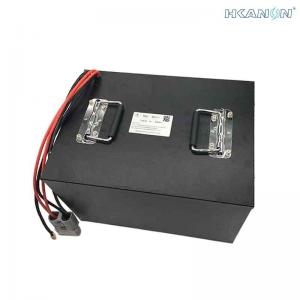
Add to Cart
Deep Cycle LiFePO4 Lithium Solar Battery 12V 1000Ah for ESS
LiFePO4 battery is a type of battery in the lithium battery family, and the positive electrode material is mainly lithium iron phosphate material. Compared with traditional lead-acid batteries, lithium-ion batteries have significant advantages in terms of operating voltage, energy density, and cycle life. As a new battery technology, iron-lithium batteries have caused great repercussions in the industry. Because lithium-iron batteries have many advantages and can produce batteries of various capacities, they are widely used.
SPECIFICATIONS
| Battery Type | LiFePO4 | |
| Nominal Voltage | 12V | |
| Nominal capacity | 1200Ah | |
| Internal Impedance | 40mΩ | |
| Cell Assembly | 4S2P-3.2V 200Ah Prismatic | |
| Discharge | Rated Discharge Current | 200A |
| Instantaneous Maximun Discharge Current | 600A | |
| Maximun Continuous Discharge Current | 200A | |
| Discharge Cut-off Voltage | 35.1±1V | |
| Safety test | Short Circuit Safety Test | No Firs, No Explosion |
| Overcharge Safety Test | ||
| Crush Safety test | ||
| Needling safety test | ||
| Extrusion Safety Test | ||
| 130 C high Temperature safety test | ||
| Retention of charge | ≥ 95% | |
| Cycle Life | > 2000 times | |
| Fit for Motor | < 2400W | |
| Warranty | 13 months | |
| Dimension | Within 250*570*240mm | |
| Net Weight | Around 90Kg | |
| Operation Temperature | _20~60℃ | |
| Storage Temperature | _20~70℃ | |



FEATURES
• High Energy density, long cycle life, reliable safety
• High lifespan: two thousand cycles and more
• Ultra safe Lithium Iron Phosphate chemistry(no thermal run-away, no fire or explosion risks)
• No lead, no heavy metal, no toxic element
• Excellent temperature robustness(-20℃ up to +60℃ )
• Flexbile deployment: combining in parallel and series
• Constant power during discharge(very low internal resistance)
• Energy efficiency>96%
• Very low self discharge(<3% per month)
• No memory effect
APPLICATIONS
Below we list some of its main application areas, and illustrate its superiority through a typical example:
1. Large electric vehicles: buses, electric vehicles, scenic spots and hybrid vehicles;
2. Light electric vehicles: electric bicycles, golf carts, small flat battery cars, forklifts, cleaning cars, electric wheelchairs, etc.;
3. Power tools: electric drills, chainsaws, lawn mowers, etc.;
4. Remote control cars, boats, airplanes and other toys;
5. Energy storage equipment for solar energy and wind power generation;
6. UPS and emergency lights, warning lights and miner's lamps (the best security);
7. Replace the 3V disposable lithium battery in the camera and the 9V nickel-cadmium or nickel-hydrogen rechargeable battery (the same size);
8. Small medical equipment and portable instruments.
An application example of replacing a lead-acid battery with an lithium iron phosphate battery. The 36V/10Ah (360Wh) lead-acid battery has a weight of 12kg. It can travel about 50km with a single charge, and the charging frequency is about 100 times. The usage time is about 1 year. If the lithium iron power battery is used, the same 360Wh energy (12 10Ah batteries are connected in series), the weight is about 4kg, the charging can travel about 80km, the charging frequency can reach 1000 times, and the service life can reach 3 to 5 years. Although the price of lithium-iron battery is much higher than that of lead-acid batteries, the overall economic effect is better with lithium-iron battery and lighter in use.